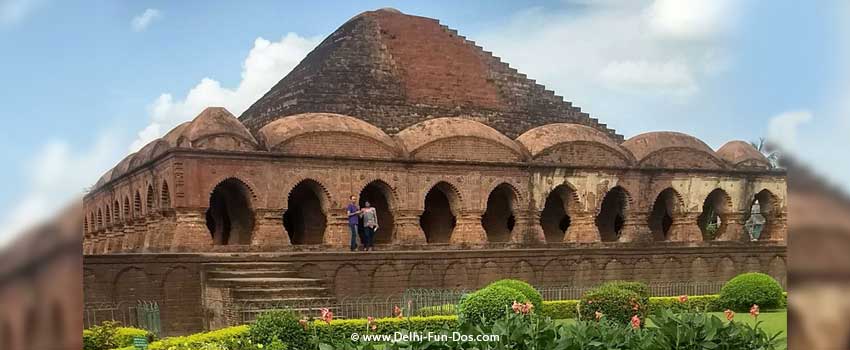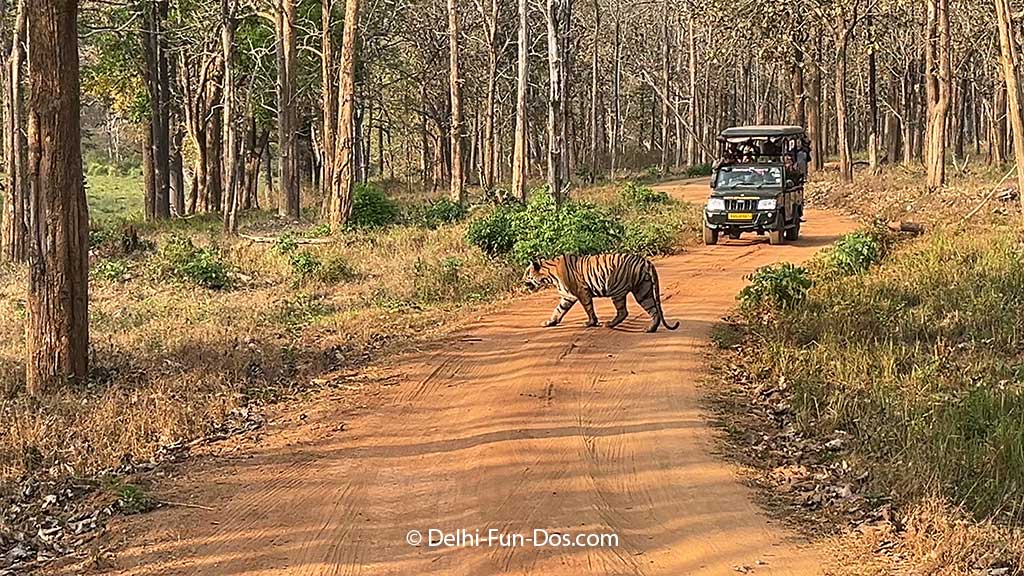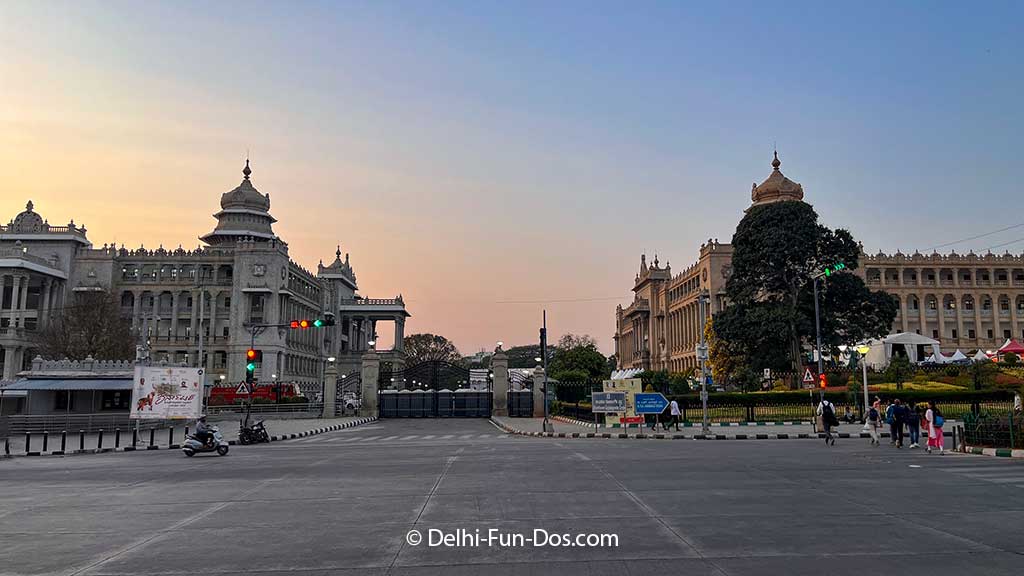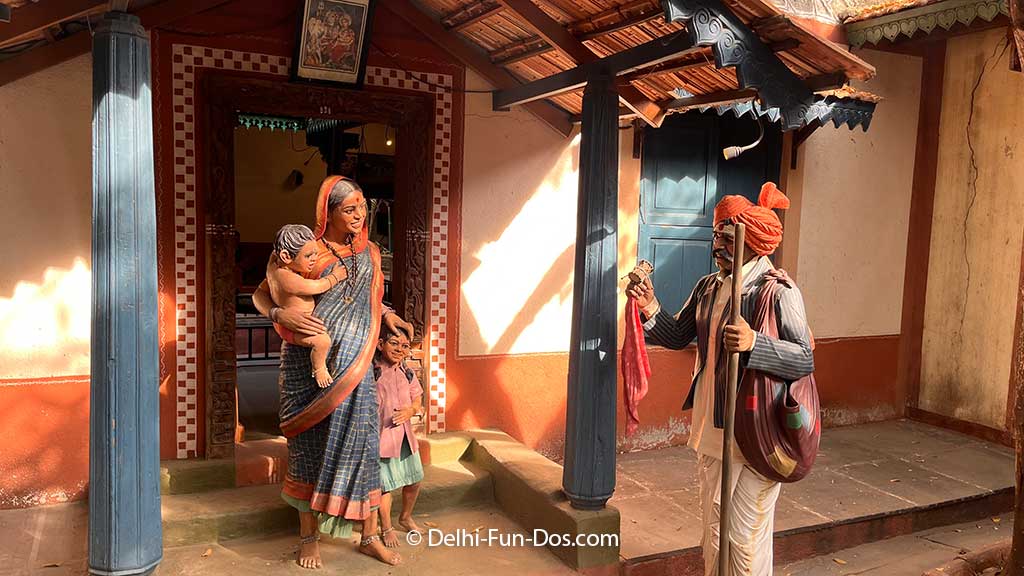Venue: West Bengal
We are not good at fairy-tales. But sometimes wish we had that skill since some experiences are best experienced in that language. Bishnupur, a small temple town in West Bengal took us to an era that we thought never was. Yet here we are – after visiting this place, trying to spin a yarn about this beautiful place.
Bishnupur located in the district Bankura of West Bengal is home to terracotta architecture built by the rulers of the Malla dynasty. The temples were built in the 1600 and 1700 hundreds and are presently under the care of Archaeological Survey of India (ASI).
Bishnupur is approximately 130 km away from Kolkata. We flew down to Kolkata and took a train from the satellite station Santragachhi. We could have driven as well, but just wanted to do this the popular way. After some rounds of Jhalmuri and Lebu-Cha (lemon tea with rock salt seasoning) took us about 4 hours to reach Bishnupur. We checked in to our hotel that we had already booked online and after resting for a bit, started our temple excursion.

Legend has it that Bir Hambir, a tyrannical king of the Malla dynasty, converted to Vaishanavism and built the Bishnupur temples. Consequently, the temples are dedicated to the deities Krishna and Radha. The Malla dynasty originated from Rajasthan. But given the lack of stones in Bengal, they resorted to terracotta while building temples in Bishnupur. The temple area is not very big. The dark red of terracotta temples sets the landscape on blaze.
We took cycle rickshaws but did some of it on foot as well. There are about 10 temples that are still in good shape and draw footfall. ASI has laid beautiful gardens around these temples. Most of the temples are in the Bengal style with the roofs that are mostly found on thatched huts in Bengal. The temple walls are adorned with infinite number of exquisite terracotta tiles each different from the other. The themes on these tiles range from the divine to the mundane. The carvings of the tiles depict perfect figures and forms and one can’t but marvel at the craftsmanship here. While one can cover Bishnupur in a single day, if one has to observe the designs on the carved tiles, it could take months. Kudos to the skills of the ancient artisans, the temples stand tall even today.
Among all the temples, we loved the Rasmancha the most. It is like a stadium with a pyramid like tower at the centre and numerous towers on all sides. It doesn’t have too many carved tiles but it is the structure here that mesmerizes. It is like a maze where one can get lost. The expanded structure of this temple also reminds us of the Colosseum in Rome. Madan Mohan temple here is perhaps the only temple in this group that has regular worship even now. Like most Indian temples, while the external structure is big, the sanctum sanctorum is very small and it still holds black stone idols of Krishna and Radha. The other live ancient temple in this town is the Mrinmayee Temple. The Durga deity here was established in the year 997 and regular puja is held throughout the year. The beautifully painted Durga idol flanked by Lakshmi, Saraswati, Kartik and Ganesh, charms the visitor, devotee or not. Another popular site at Bishnupur is the Dalamadal Kaman (canon). Legend has it that Lord Madan Mohan fired this canon himself to protect Bishnupur from Maratha dacoits or borgies.
Bishnupur being the hub of activities in Bengal for at least 700 years is famous for a host of art forms. Bishnupur Gharana classical music flourished under royal patronage. Bishnupur style paintings or Patachitra were cherished by connoisseurs. Dokra, an ancient metal casting system using the lost wax casting process originated in Bishnupur. Some of these artforms are unfortunately struggling to survive due to lack of commercial interest. Perhaps the biggest survivor of Bishnupur art forms is the Baluchari weaving technique. Baluchari saris are extremely sought after among fashionistas in India and overseas.
There is so much more to say here but the post is already very long. But you can go and see the spectacle for yourselves. Many of us have seen or heard about the Ming Soldiers in China. These are an array of life-like soldier statues made of terracotta. But Bishnupur is still uncharted territory especially up north. We were awestruck when we visited this place and recommend this to one and all. The breath-taking terracotta temples of Bishnupur are perhaps the best kept secret of West Bengal and deserves a standalone visit to this state.




Wow what a beautiful looking temple to get to go and visit! The place looks incredible and I would absolutely love to go and visit it myself.
Bishnupur is on my travel bucket list for a long time. Your post has only further increased my interest ☺️
Bengal is a beautiful city, you have written really well.
Thanks 🙂
Really enjoyed reading this. Very well written informative post.
Bishnupur seems to have a very rich history and some wonderful architecture…it would certainly help in knowing more about the Indian culture and heritage…hope to visit here soon
Wow I have never heard of this place but it looks just amazing. Actually feels like stepping back in time.
Your post has made me want to visit this ancient Temple land.
Wow beautiful structures here! And so much history! Seems like a great place to check out!
All the temples look like they are from a long forgotten fairytale. I love imagining what life was like and how people felt as they visited them years ago.
That is an interesting thought!
It looks so beautiful here, you are so lucky to have visited. There is so much history in the buildings and so much to learn.